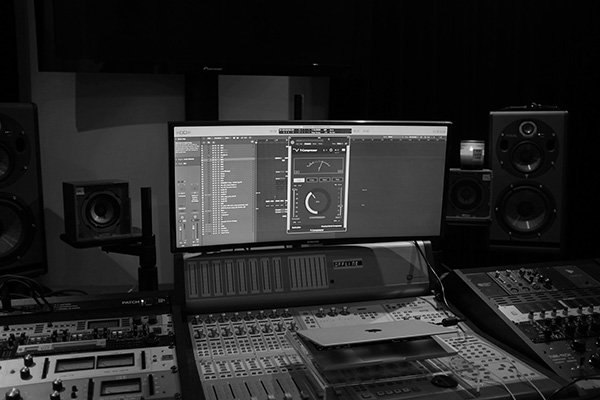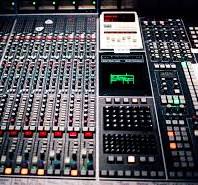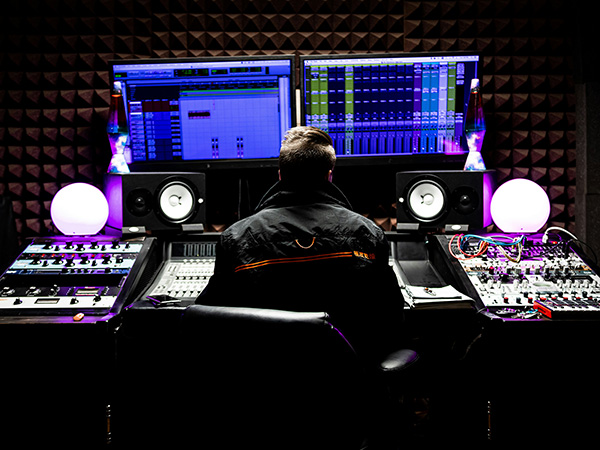A mastering engineer adds the final polish, balance, and readiness to your music, making it shine for distribution and listener enjoyment.
Tasks of a Mastering Engineer
History of the Mastering Engineer
Famous Mastering Engineers
Mastering Tips & Techniques
Tasks of a Mastering Engineer
Improving Playback Systems Translations
One of the main tasks of a mastering engineer is to improve the playback systems translations. This means ensuring that the recording sounds great on different playback systems, such as speakers, amplifiers, and various audio formats.
Maintaining Consistency
Mastering engineers aim to make a mix consistent with respect to subjective factors based on the perception of listeners, regardless of their playback systems and the environment. This involves ensuring that the mix sounds cohesive and impactful across different formats and mediums.
Sequencing and Track Transitions
Mastering engineers pay attention to the flow between songs on an album. They adjust fades, gaps, or crossfades to maintain continuity and coherence, creating a seamless and engaging listening experience.
Format Conversion and Compatibility
Mastering engineers convert audio formats as needed for various distribution channels. They ensure compatibility with different platforms such as streaming services, CDs, vinyl, and broadcast. This may involve creating different master versions tailored to specific formats.
Sculpting and Polishing
The mastering engineer’s task is to sculpt and polish the overall dynamic and spectral balance of the recording. They ensure that the album is sonically cohesive and impactful, regardless of the format or medium it is played through
Quality Control
Mastering engineers perform quality control by making small corrections and enhancements where needed or beneficial. They also ensure that the final product meets industry standards and is ready for release.
Metadata and Delivery
Mastering engineers handle the technical aspects of delivering the final product to the client. This includes adding metadata, creating different file types, preparing CD DDP (Disc Description Protocol) files, vinyl premasters, and cue sheets, among other tasks.
History of the Mixing Engineer
The role of the mastering engineer has evolved over time alongside advancements in audio technology and the changing needs of the music industry. Here is a brief history of the mastering engineer:
Early Years
In the early days of audio recording, there was no distinction between different types of audio engineers. Everything was recorded directly onto 10-inch vinyl records that played at 78 RPM. However, in 1948, the age of the mastering engineer began when Ampex introduced its first commercial Magnetic Tape Recorder. With the introduction of magnetic tape, a transfer had to be made to a vinyl master for delivery to the pressing plant to make records.
Vinyl Era
During the vinyl era, mastering engineers were primarily responsible for transferring recordings from tape to vinyl. Their focus was on optimizing the audio so that a vinyl disc could play reasonable quality audio without the needle skipping off the record. The work of cutting engineers, as they were sometimes called, was mainly focused on the technical issues of disc cutting rather than creative issues.
Loudness Wars and CD Revolution
In 1957, the stereo vinyl record came onto the market, and mastering engineers developed techniques to make records louder. This marked the birth of the Loudness Wars, where engineers aimed to make recordings as loud as possible for better radio playback and higher record sales. In 1982, the introduction of the CD revolutionized mastering, as digital masters became more common.
Digital Age
With the advent of digital audio technology, mastering engineers began working with digital masters, although analog masters such as audio tapes are still used by some engineers who specialize in analog mastering. Digital mastering allows for more precise control over the audio and provides flexibility in format conversion and distribution.
Throughout history, the role of the mastering engineer has been to prepare audio recordings for distribution, whether by physical media such as vinyl records or CDs, or through streaming platforms. They have evolved from primarily technical experts focused on transferring recordings to mastering artists who shape and enhance the sonic quality of a recording.

Essential Tools of the Mastering Engineer


Perfect Monitors & Acoustics
High-quality studio monitors and well-treated room acoustics are crucial for a mastering engineer. Accurate and transparent monitors allow the engineer to hear the details, dynamics, and tonal balance of the audio with precision. Good room acoustics help minimize unwanted reflections and resonances that can affect the accuracy of the engineer’s decisions. The combination of perfect monitors and acoustics provides a reliable listening environment for making critical mastering decisions.
Stereo Imaging
Stereo imaging refers to the spatial placement and perception of audio elements within the stereo field. It involves creating a balanced and immersive soundstage where each instrument and sound source occupies its appropriate position. Mastering engineers use various techniques, such as panning, stereo widening, and spatial enhancement, to optimize the stereo image and create a sense of depth, width, and clarity in the audio. By carefully manipulating the stereo image, the mastering engineer can enhance the overall listening experience.


Mastering EQ (Equalization)
Equalization is the process of adjusting the frequency balance of audio signals. Mastering engineers use EQ to shape the tonal characteristics of the audio, enhance certain frequencies, and correct any imbalances or issues in the mix. By carefully applying EQ, the engineer can achieve a more balanced and pleasing sound, ensuring that the audio translates well across different playback systems. EQ is a powerful tool that allows the mastering engineer to fine-tune the audio and bring out its full potential.


Famous Mastering Engineers
Lucy Patane
Lucy Patane is a mastering engineer known for her work in electronic music. She has been nominated for awards in categories such as Best Electronic Music Album and Best Alternative Pop Album.
Mike Marsh
Mike Marsh is a mastering engineer who has worked extensively in electronic and dance music. He has contributed to the sound of numerous artists and labels in both mainstream and underground scenes.
Georgios Gkanidis
Georgios Gkanidis is an audio engineer and music producer with a focus on electronic music. He has coproduced, mixed, and mastered electronic music projects that have entered the Beatport Top 100.
Bernie Grundman
Bernie Grundman is a mastering engineer who has made a significant impact on the music industry. He has worked on a wide range of albums, including classics in various genres, such as Michael Jackson’s “Thriller” and Dr. Dre’s “The Chronic.”
Bob Katz
Bob Katz is a mastering engineer known for his expertise in audio mastering and his contributions to the field. He has worked on a wide range of projects, including albums by artists such as Diana Ross, Lou Reed, and Cassandra Wilson. Katz is also the author of the book “Mastering Audio: The Art and the Science,” which is considered a valuable resource for audio engineers and mastering professionals.
Bob Ludwig
Bob Ludwig is an American mastering engineer with an extensive discography. He has worked on recordings for numerous artists across various genres, including Led Zeppelin, Metallica, Queen, Bruce Springsteen, and Daft Punk. Ludwig has received multiple Grammy Awards for his work and is highly regarded for his technical expertise and artistic contributions to the mastering process.
Three Mastering Tips & Techniques
Set Levels with a Limiter
One of the fundamental steps in mastering is setting the overall level of the track using a limiter. This helps ensure that the track reaches an appropriate loudness level while avoiding distortion. By carefully adjusting the limiter, you can achieve a balanced and controlled sound.
Adjust Tonal Balance with EQ
Another crucial technique in mastering is using an equalizer (EQ) to shape the tonal balance of the track. By making subtle adjustments to the frequency spectrum, you can enhance certain elements, correct any imbalances, and achieve a more cohesive and pleasing sound. It is common to apply EQ at the beginning of the mastering chain.
Use Compression Wisely
Compression can be used in mastering to control dynamics, enhance the groove, or add color to the sound. However, it is important to use compression sparingly and only if needed. Placing compression between the EQ and limiter in the mastering chain allows for more precise control over the dynamics without negatively impacting the tonal balance or overall level.
Why Hire a Professional Mastering Engineer for Your Music Project?
Hiring a professional mastering engineer is recommended for several reasons. Here are five key reasons:
Expertise and Experience
Professional mastering engineers have extensive knowledge, skills, and experience in the art of mastering. They understand the technical aspects of audio processing, such as EQ, compression, and stereo imaging, and know how to apply them effectively to enhance the overall sound quality of a track. Their expertise allows them to make critical decisions and adjustments that can significantly improve the final product.
Objective Perspective
A mastering engineer provides an objective and fresh perspective on your music. They listen to your tracks in a controlled environment with high-quality monitoring systems, ensuring accurate representation of the sound. This allows them to identify and address any issues or inconsistencies that may have been overlooked during the production or mixing stages. Their unbiased viewpoint can bring out the best in your music.
Optimized Sound for Different Playback Systems
Mastering engineers have a deep understanding of how music translates across various playback systems and formats. They can optimize your tracks for different platforms, such as streaming services, radio, or vinyl, ensuring that your music sounds its best in each context. They can also address technical considerations like loudness normalization and inter-sample peak prevention, ensuring your music translates well across different mediums.
Enhanced Sonic Cohesion
A professional mastering engineer can help achieve a cohesive and consistent sound across an album or EP. They can ensure that the tracks flow seamlessly from one to another, maintaining a unified sonic character. This attention to detail can enhance the overall listening experience and create a more professional and polished product.
Industry Standards and Quality
Hiring a professional mastering engineer ensures that your music meets industry standards and quality expectations. They have access to high-end equipment, specialized software, and acoustically treated rooms, allowing them to achieve a level of sonic excellence that may be challenging to replicate in a home studio environment. This can give your music a competitive edge and increase its chances of standing out in a crowded market.